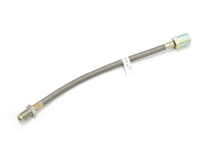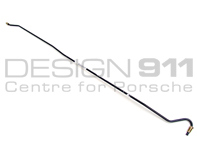Clutch Hoses & Lines

- Porsche 993 (911) TURBO 1994-96
- Porsche 993 (911) TURBO S 1994-97

Fits:
Porsche 993 Turbo 1985-98
Click 'Zoom in' for large parts diagram.
Diagram ref no 11
Related reference numbers
Related, superseded, cross reference or alternative numbers for comparison.
99331447702
The product you are viewing cross references to these numbers

- Porsche 964 (911) C2 1989-93
- Porsche 964 (911) C4 1989-93
- Porsche 964 (911) RS 3.6L 1991-93
- Porsche 964 (911) RS 3.8L 1991-93
- Porsche 964 (911) TURBO 3.3L 1991-93
- Porsche 964 (911) TURBO 3.6L 1991-93
- Porsche 993 (911) C2 1994-97
- Porsche 993 (911) C4 1994-97
- Porsche 993 (911) RS 1994-97
- Porsche 993 (911) C2S 1994-97
- Porsche 993 (911) C4S 1994-97
- Porsche 993 (911) TURBO 1994-96
- Porsche 993 (911) GT2 1994-97
- Porsche 993 (911) TURBO S 1994-97

Fits:
Porsche 964 1989-94 RHD Cars
Porsche 993 1995-98 RHD Cars
Click 'Zoom in' for large parts diagram.
Diagram ref no 12
Related reference numbers
Related, superseded, cross reference or alternative numbers for comparison.
96442311001
The product you are viewing cross references to these numbers
High-Quality Clutch Hoses & Hydraulic Lines for Smooth, Consistent Clutch Performance
Clutch hoses and hydraulic lines play a crucial role in the clutch system, ensuring brake fluid (or hydraulic fluid) reaches the slave cylinder with the correct pressure. These hoses transmit the force generated by the clutch pedal, allowing the clutch to engage and disengage smoothly. A healthy clutch hose ensures precise pedal feel, clean gear changes and reliable performance in both daily driving and high-load conditions.
Whether you are restoring a classic, maintaining a modern performance vehicle or repairing a leaking hydraulic system, high-quality clutch hoses and lines are essential for safe, predictable clutch operation.
What Clutch Hoses and Hydraulic Lines Do
These components support clutch function by:
- Transferring
hydraulic pressure from the master cylinder to the slave cylinder
- Maintaining
consistent fluid flow for smooth clutch engagement
- Ensuring
precise pedal feel, particularly under hard driving
- Withstanding
pressure spikes during quick shifts or spirited acceleration
- Resisting
expansion, especially with braided or reinforced hose upgrades
- Supporting long-term hydraulic system reliability
A properly functioning hydraulic line ensures optimal clutch operation in all driving conditions.
Why Clutch Hoses and Lines Commonly Fail
Clutch hoses operate in high-temperature, high-pressure
environments, and over time they can degrade or fail. Common reasons include:
- Rubber
hose swelling or softening due to age and fluid exposure
- Cracking
or brittleness from heat cycling
- Corrosion
on metal hard lines
- Internal
collapse, restricting fluid flow
- Leaks
caused by worn fittings or degraded seals
- Contamination,
weakening hose material
- Abrasion or physical damage from engine movement or debris
Failure symptoms often include a spongy or soft clutch pedal, difficulty engaging gears, fluid leaks, or complete clutch loss.
Why You Should Replace Worn Clutch Hoses & Lines
Replacing worn or damaged hoses with a high-quality, precision-engineered alternative designed to meet original hydraulic performance standards restores clutch reliability and drivability.
Benefits include:
- Faster, more consistent clutch engagement
- Improved pedal feel and responsiveness
- Reduced risk of hydraulic failure or loss of clutch control
- Enhanced durability in high-temperature conditions
- Better resistance to pressure spikes
- Longer-lasting performance with braided or reinforced hose upgrades
A new clutch hose or line is a cost-effective upgrade that significantly improves safety, shifting quality and overall driving confidence.







